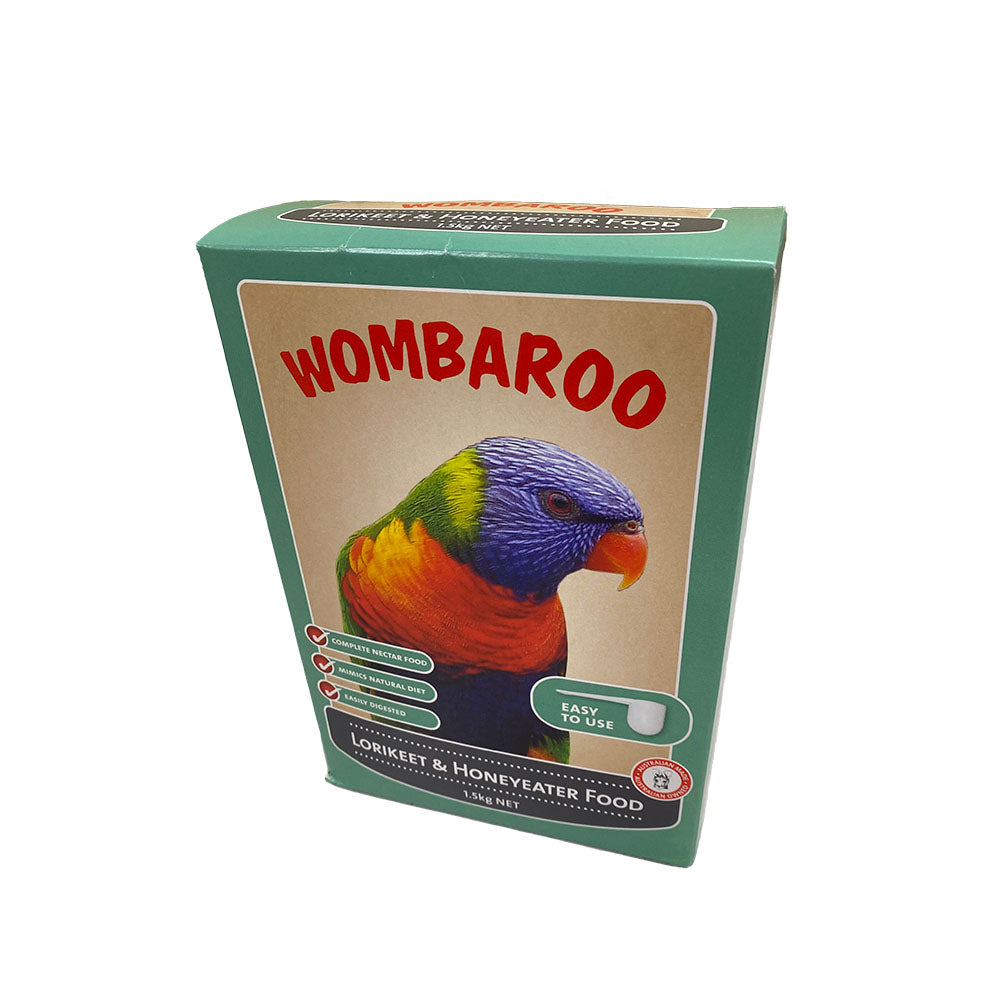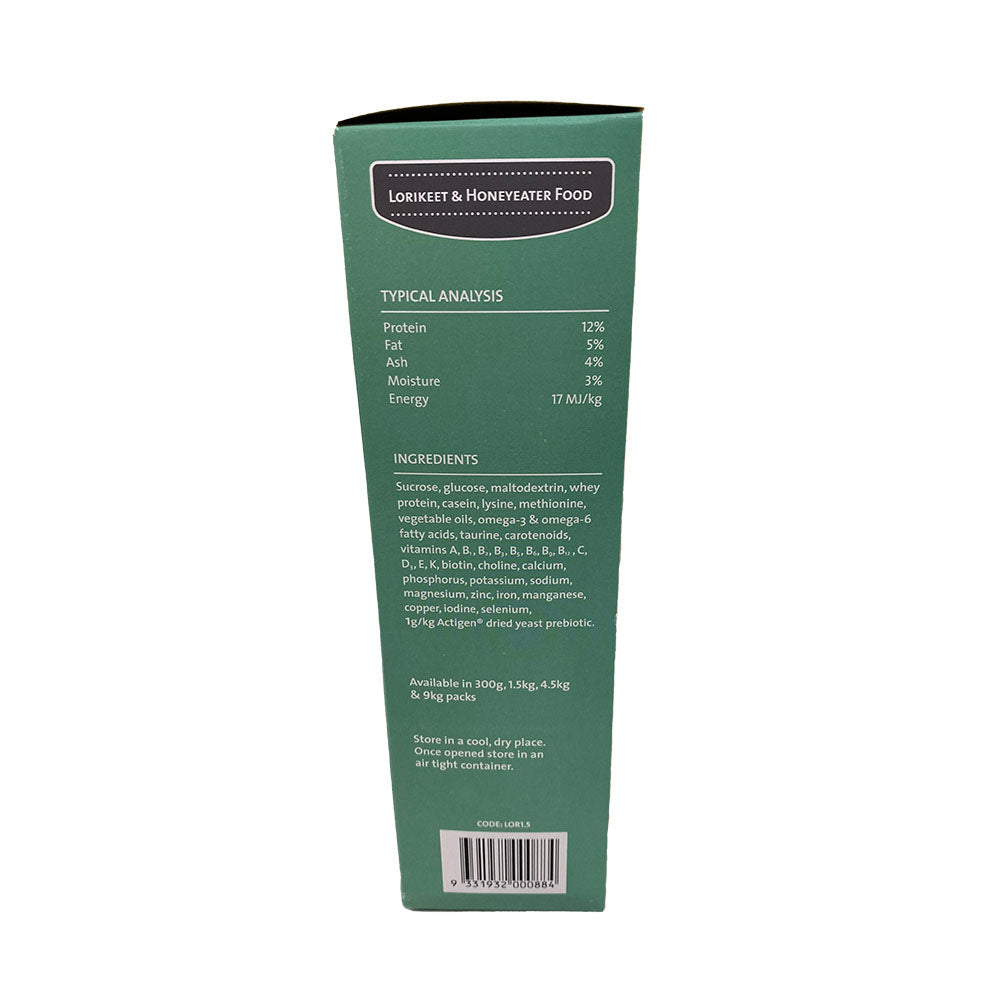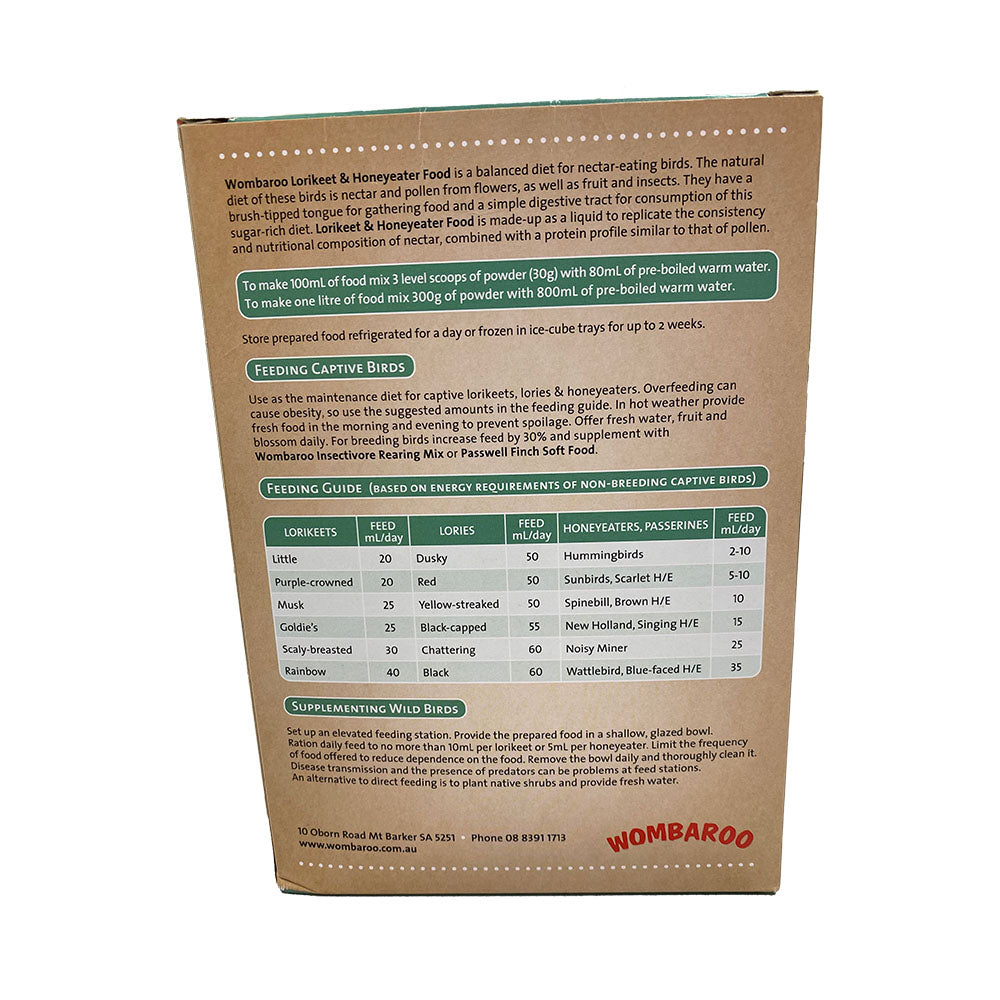Wombaroo Food Products
WOMBAROO Lorikeet & Honeyeater Food
WOMBAROO Lorikeet & Honeyeater Food
PLUS Price: $38.66 AUD
Couldn't load pickup availability
Complete, balanced diet for all nectar-eating birds, including lorikeets, lories, honeyeaters, wattlebirds, miners, sunbirds, and hummingbirds.
Key Features:
- Complete Nectar Food: Powder dissolves in water to create a liquid diet that stays mixed.
- Mimics Natural Diet: Replicates the consistency and nutrient value of natural nectar.
- Easily Digested: Low in fibre and starch for optimal digestive health.
- Improved Health: Calorie-controlled, balanced protein, and moderate levels of iron, vitamin A, and vitamin D3.
Ingredients: Sucrose, glucose, maltodextrin, whey protein, casein, lysine, methionine, vegetable oils, omega-3 and omega-6 fatty acids, taurine, carotenoids, vitamins (A, B1, B2, B3, B5, B6, B9, B12, C, D3, E, K), biotin, choline, calcium, phosphorus, potassium, sodium, magnesium, zinc, iron, manganese, copper, iodine, selenium, and 1g/kg Actigen® dried yeast prebiotic.
Typical Analysis:
- Protein: 12%
- Fat: 5%
- Ash: 4%
- Moisture: 3%
- Energy (ME): 17 MJ/kg
Directions:
To make 100mL: Mix 3 scoops of powder (30g) with 80mL of warm water.
To make 1 Litre: Mix 300g of powder with 800mL of warm water.
Add half the water to the powder first and mix until dispersed. Then add the remaining water and mix thoroughly. Prepared food can be stored in the fridge for a day or frozen for up to 2 weeks. It is useful to make larger quantities and store them frozen in small portions (e.g., ice cube trays) so that the required daily feed volumes can be easily thawed out.
Feeding Guide:
Captive Birds: Use as the maintenance diet for captive lorikeets, lories, and honeyeaters. To prevent obesity, follow the suggested feeding amounts. In hot weather, provide fresh food in the morning and evening to prevent spoilage. Offer fresh water, fruit, and blossom daily. For breeding birds, increase feed by 30% and supplement with Insectivore Rearing Mix or Finch Soft Food.
Supplementing Wild Birds: Set up an elevated feeding station and provide the prepared food in a shallow, glazed bowl. Ration daily feed to no more than 10mL per lorikeet or 5mL per honeyeater. Limit the frequency of food offerings to reduce dependence. Remove and clean the bowl daily. To avoid disease transmission and predator presence, consider planting native shrubs and providing fresh water as an alternative to direct feeding.
Share








